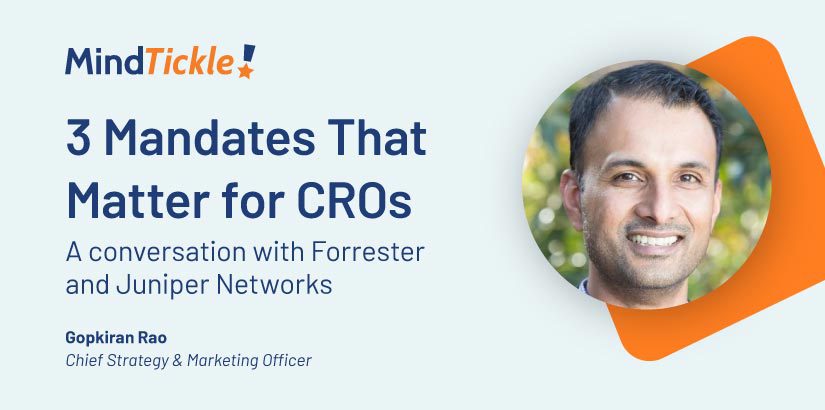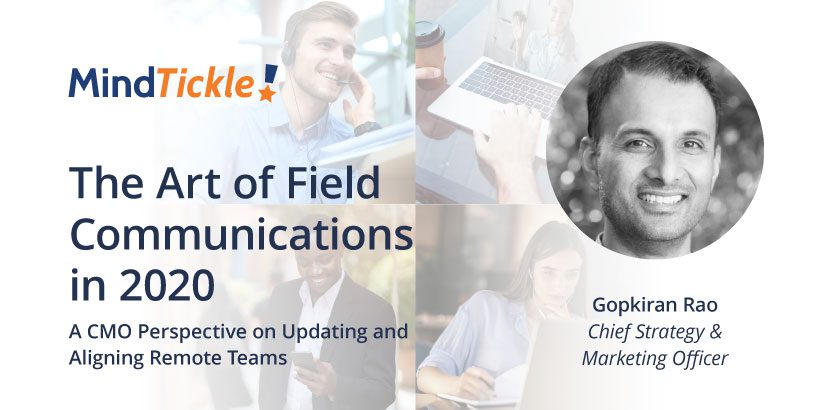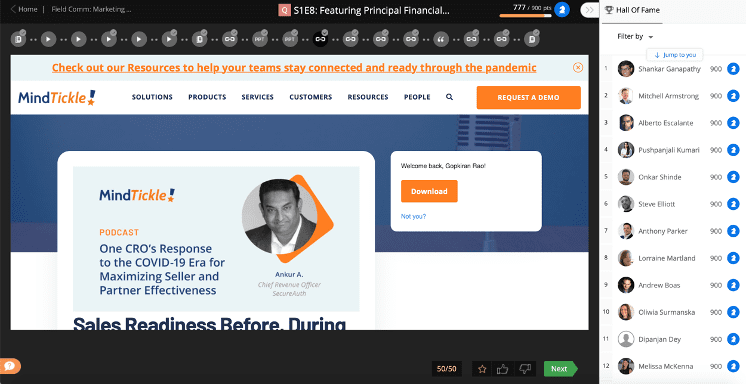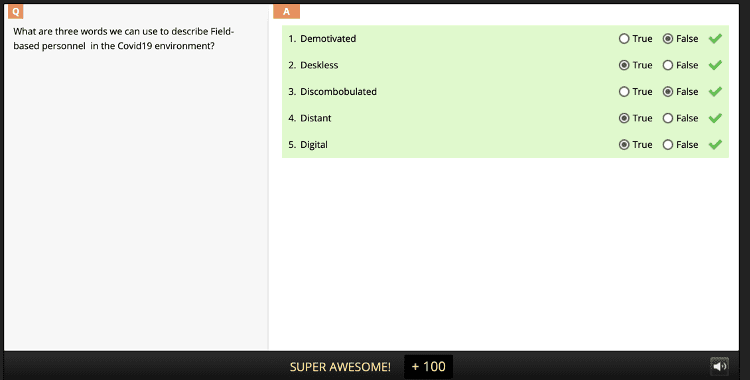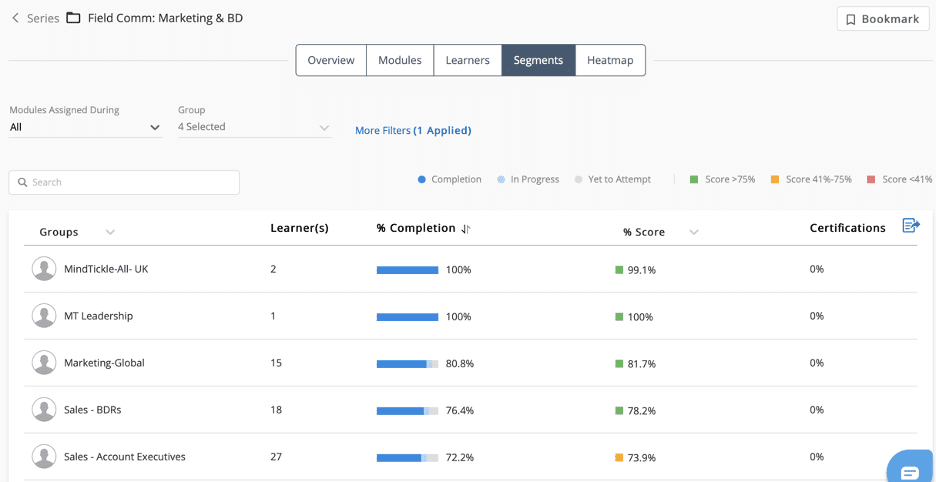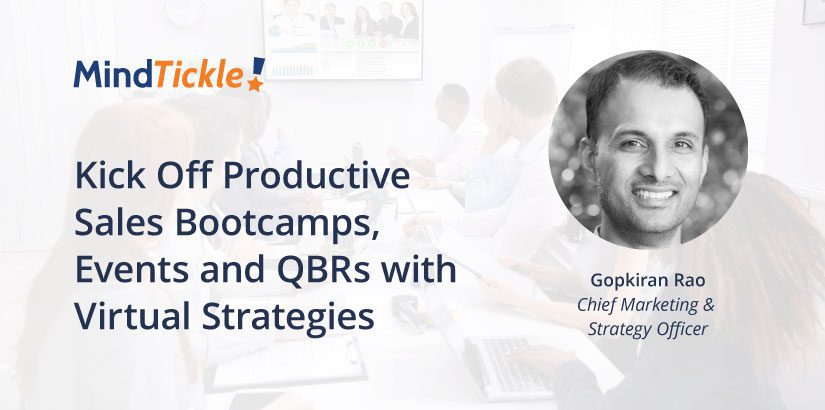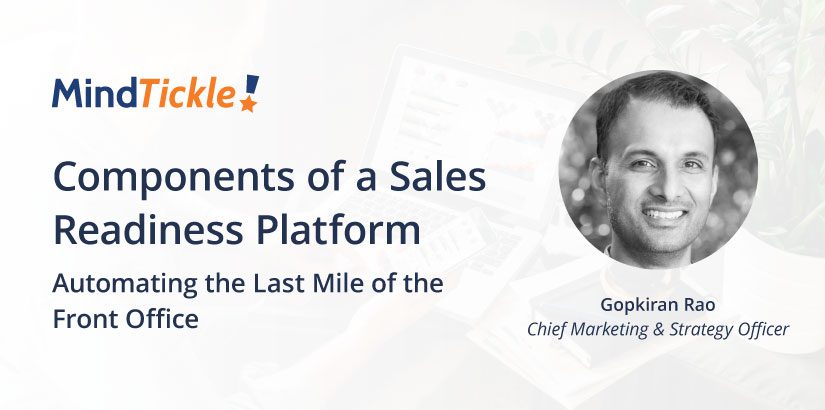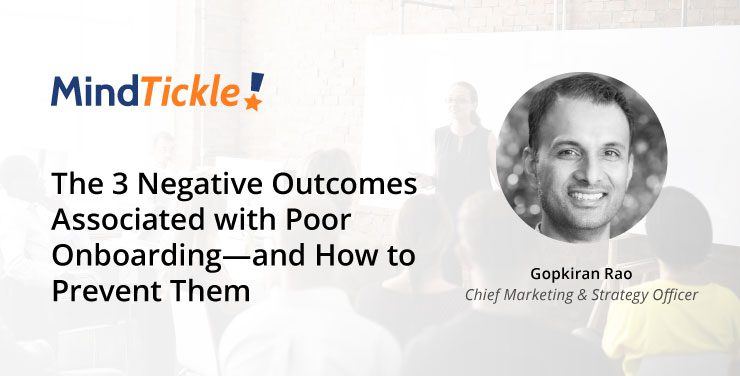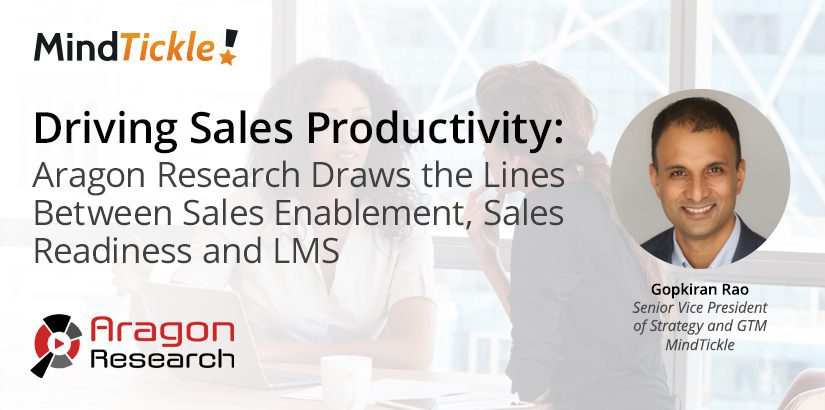3 Mandates That Matter for CROs: A Conversation with Forrester and Juniper Networks
COVID-19 changed the game of life and by extension changed the way we think and do business. For people that sell, support customers, and manage clients for a living, 2020 will mark the end of an era that focused on interpersonal, in-field skill. What the pandemic has not changed is the pattern of sales leaders running full speed ahead to hit and exceed their quarterly numbers. This is both a paradox and an existential crisis. If you are a CRO and are looking at a hockey stick of quarterly sales goals you have a small window to enable your inside and outside teams. I recently hosted a webinar with two Sales Enablement experts, Mary Shea, Principal Analyst at Forrester Research, and Hang Black, VP of Global Sales Enablement at Juniper Networks, to discuss how CROs at the most competitive organizations are ‘democratizing B2B sales’ and building digital-first, customer-ready teams in the remote and ready era.
Our discussion opened with a clear acknowledgement that Sales team effectiveness was an issue even before the pandemic hit. According to a March 2020 research report from the Sales Management Association, 44% of companies surveyed said their sales force isn’t effective, 57% said they’ve not been able to improve sales effectiveness over the past 12 months, and 82% don’t have effective development programs for their sales reps. All these deficits have left many companies struggling to prioritize opportunities, engage with the right buyers and connect with important prospects, demonstrate value, and retain business.
From there our discussion moved to seven trends, underlying these alarming stats, that Mary and Hang did a great job of covering in the webinar:
The downward trajectory of the on-site sales meeting. A Forrester survey conducted pre-COVID-19 revealed that one in seven business buyers prefers not to meet with a sales rep in person. This momentum increased as the digital-native generations became the economic buyers. Post-COVID-19, we’re likely looking at 80% of B2B sales taking place digitally anyway — over Zoom, for example — forcing sales reps to increase and improve their skill sets and close the gap between buyer expectations and seller capabilities.
The convergence of inside and outside sales. Forrester research shows that about 40% of field sellers’ activities are essentially the same as inside sales, all as a result of increased digital activation of buyers. The point is that they’re all sellers now, and as such, they all require the skills and training needed that will help them be successful.
Use of digital tools for buyers and sellers. Buyers are increasingly doing more on their own to self-educate, browsing peer-review sites, engaging with analyst communities and downloading digital content. They’re also engaging through interactive digital tools, whether that’s on a supplier website or through a remote meeting share. As the buyer does more of the legwork to understand foundational concepts of a product or service, the seller’s role becomes more consultative, where they’re advising and coaching the buyer with stats, inside information and industry trends to support and supplement the buyer’s decision. On the sales side, it’s becoming increasingly important for sales and marketing tools to be interconnected and automated.
Increased investment in remote selling models. Companies are pouring money into the inside sales channel. For example, Microsoft completely restructured its selling organization a few years ago to account for its cloud-based business; and ADP transferred a lot of its external sellers into an internal remote selling model, making it the company’s largest quota-carrying channel.
SaaS-ification of industries outside of technology. Traditional businesses are now starting to embrace the subscription and SaaS delivery model.
Sales motion is perpetual, not a one-time spike. The flurry of one-time sales activity before a deal closes or before renewal is unnecessary; in fact, Forrester found that the actual selling motion is only about 16% of the entire sales cycle. Buyers now expect ongoing and consistent value-added interactions across the entire customer life cycle, which could include providing ongoing data or other support even after the deal has closed. It also broadens the number of employees on the seller’s side that are involved in customer interactions, which again reiterates the need for all customer-facing personnel to have the skill sets and training required to be successful.
Buyers are indifferent to how sales organizations are set up. Customers don’t care whether they’re buying from inside or outside sales reps. They just want to engage consistently and fluidly across any channel at any point in the buy cycle.
As you can see, while COVID-19 didn’t create these trends, it certainly accelerated them. And, as we all agreed, with the remote-work environment likely here to stay, sellers must make that 16% of their “selling motion” impactful and effective in a wholly digital landscape. Here are three tips from our discussion to keep your sales force — and sales organization as a whole — effective, efficient and successful:
Audit your sales tools, renegotiate contracts, keep only the vendors that are providing consistent and ongoing value, and create a digital selling platform at scale. There was a time when digital transformation was reserved for high-margin tech and services companies, but no more. Given the transition to digital selling, every company should be building some sort of digital selling platform that can scale.
Rethink traditional seller hierarchies and focus on establishing a universal set of skills across revenue-generating teams. Despite the fact that customers really don’t care about whether a seller is inside, outside, SDR, etc., companies continue to hang on to the hierarchical nomenclature and terminology. It’s now time to rethink how they organize, align and train sellers and how they’re branded.
Activate more employees on behalf of revenue goals and make readiness a CRO objective. Ensure that everyone in your company is equipped at any moment to have a customer-facing conversation because in 2021, they’re all going to have to do so.
While the pandemic has been a great global challenge, it is also driving opportunity for transformation. Just look at the gig economy: Uber, Airbnb and others emerged in our last global economic downturn in 2009. Today, companies can see this new, challenging sales landscape as teh graveyard for the good ol’ days and ways, or they can look at it as a transformational opportunity to really change the way enablement and all customer-facing teams can succeed at selling in the “next normal,” all-digital environment.
Learn more in this on-demand webinar featuring Sales Enablement experts Mary Shea, Principal Analyst at Forrester and Hang Black, VP of Global Sales & Technical Enablement at Juniper.

